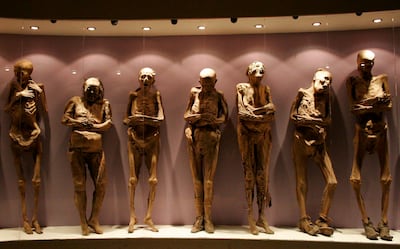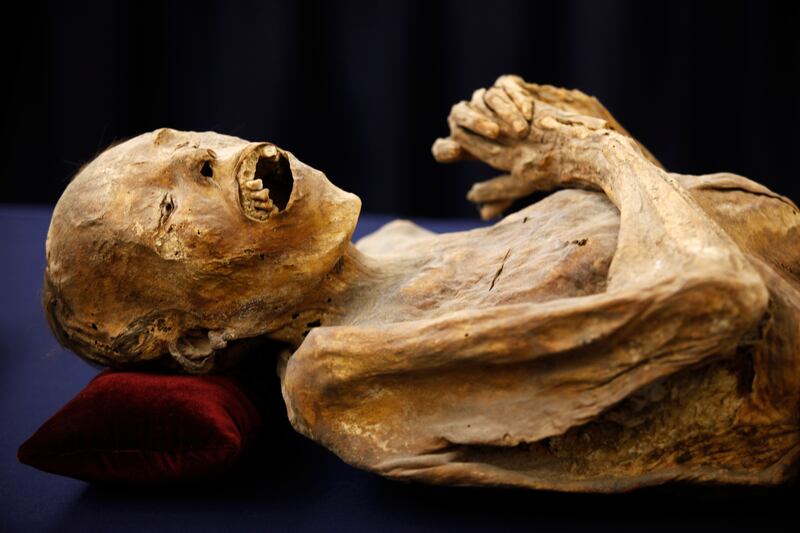A travelling display of mummies from the 1800s on display in Mexico may pose a health risk to the public, government scientists say.
The corpses became mummified when they were buried in crypts in dry, mineral-rich soil in the state of Guanajuato.
Some have hair, leathery skin, and their burial clothing.
The National Institute of Anthropology and History called the display of six mummies in glass cases at a tourism fair in Mexico City “worrisome”.
Fungus appears to have grown on one of the mummies, the federal institute said. Managers said they had not been consulted about the display.
It was unclear whether the cases were airtight.
“It is even more worrisome that they are still being exhibited without the safeguards for the public against biohazards,” the federal institute said.

“From some of the published photos, at least one of the corpses on display, which was inspected by the institute in November 2021, shows signs of a proliferation of possible fungus colonies.
“This should all be carefully studied to see if these are signs of a risk for the cultural legacy, as well as for those who handle them and come to see them.”
The mummies are usually on display in the Guanajuato state capital.
Some of the mummies were on show in the US in 2009.
The mummies were naturally preserved, some say, because of the climate, mineral-rich environment, other because of the sealed crypts.
They were disinterred starting in the 1860s because families could no longer pay burial fees and put on display.







